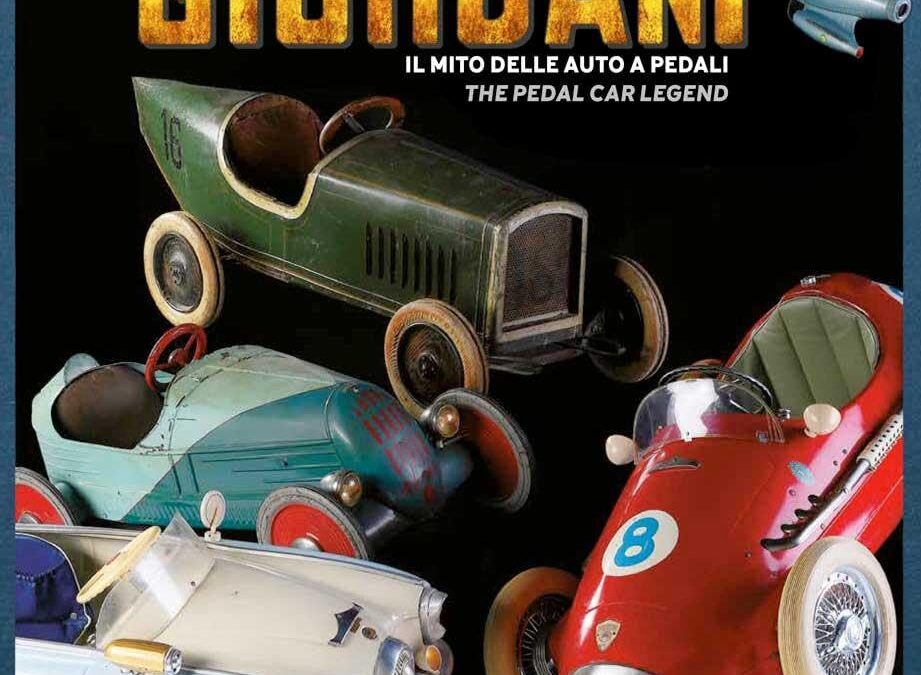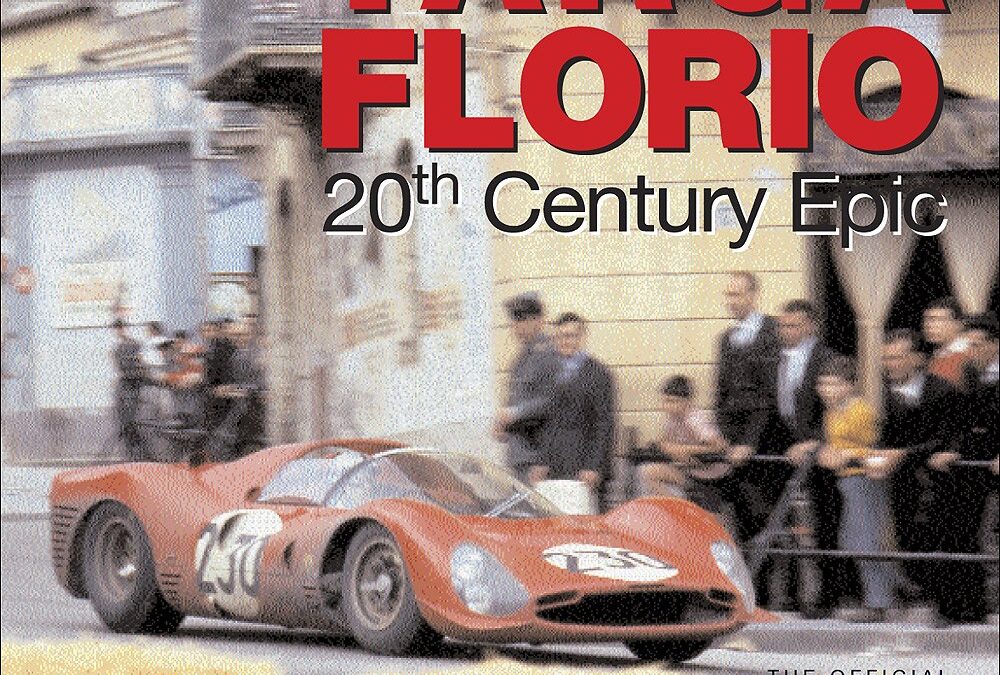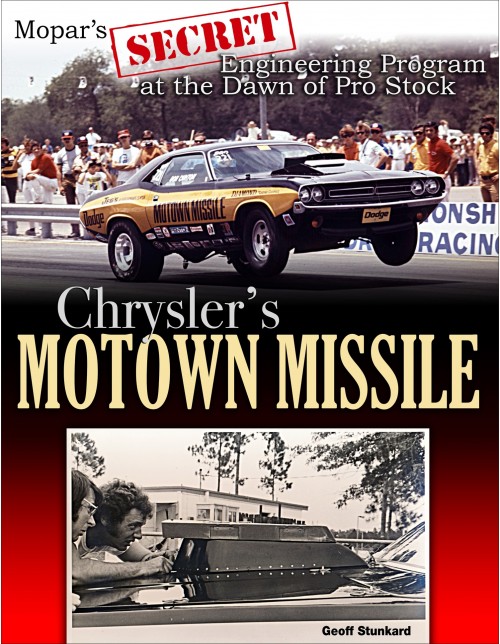
Relive Mopar’s skunkworks racing team and its rise to dominance in this fascinating history!
The drama of 1970s Chrysler Pro Stock drag racing unfolds in this new book, which focuses on the racing and technological evolution of the legendary Motown Missile and Mopar Missile racing programs from 1970 to 1977. Unequaled by any other drag racing development program, this was a huge undertaking in term of time, money, and effort.
The 1970s saw great change in Detroit and in auto racing, with Pro Stock being a huge draw for fans. Chrysler racing historian and author Geoff Stunkard presents a chronological recollection, drawing from many interviews and summaries of the actual technical efforts that the factory accomplished and includes both rare/unpublished technical and personal images from the team members and some of the most dramatic images taken by the sport’s best photographers.
From the earliest days of owner/engine builder Ted Spehar, factory engineer Tom Hoover, and driver Don Carlton, the narrative is a colorful look at the team’s inner workings, programs, victories, and even defeats. Set against a backdrop of characters like Bill Grumpy Jenkins, Dandy Dick Landy, and Dyno Don Nicholson, Carlton’s driving prowess had few equals. Indeed, called by one period scribe as a cyborg, the likeable pilot would pay the ultimate price as a drag racing driver. From the Challengers and `Cuda to the Demons and Colts, the book showcases the cars that made Chrysler so much a part of this racing era, as well as Ted Spehar’s never-before-revealed information on the 1970s Pro Stock engine program.

As the Pearl Harbor attack began, a U.S. cargo ship a thousand miles away in the middle of the vast Pacific Ocean mysteriously vanished along with her crew. What happened, and why?
On December 7, 1941, even as Japanese carrier-launched aircraft flew toward Pearl Harbor, a small American cargo ship chartered by the Army reported that it was under attack by a submarine halfway between Seattle and Honolulu. After that one cryptic message, the humble lumber carrier Cynthia Olson and her crew vanished without a trace, their disappearance all but forgotten as the mighty warships of the U.S. Pacific Fleet burned.
The story of the Cynthia Olson‘s mid-ocean encounter with the Japanese submarine I-26 is both a classic high-seas drama and one of the most enduring mysteries of World War II. Did I-26‘s commander, Minoru Yokota, sink the freighter before the attack on Pearl Harbor began? Did the cargo ship’s 35-man crew survive in lifeboats that drifted away into the vast Pacific, or were they machine-gunned to death? Was the Cynthia Olson the first American casualty of the Pacific War, and could her SOS have changed the course of history?
Based on years of research, Dawn of Infamy explores both the military and human aspects of the Cynthia Olson story, bringing to life a complex tale of courage, tenacity, hubris, and arrogance in the opening hours of America’s war in the Pacific.
Circus Before Dawn
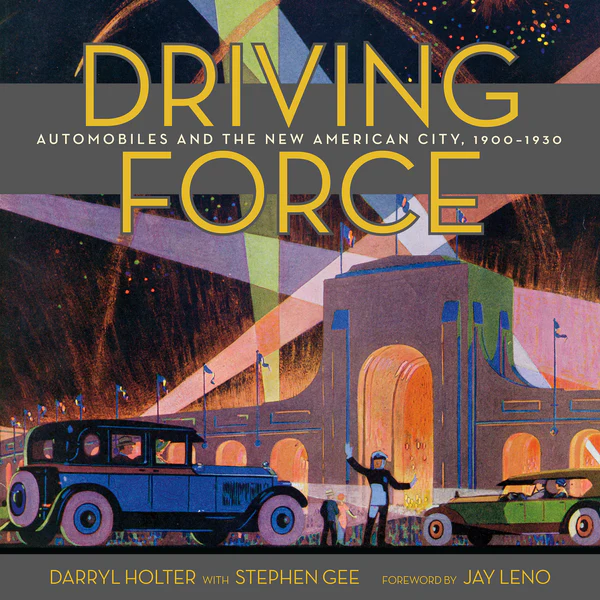
Driving Force: Automobiles and the New American City 1900-1930 (Angel City Press) explores how Los
Angeles’s enigmatic car culture propelled the explosive growth of America’s passion for cars. And with thoroughly researched text and page-after-page of vintage images, it shows how roadblocks that limited the sales of automobiles in the rest of the country, were eliminated in a new-thinking city in the earliest days of the car industry.
At the dawn of the twentieth century, as Los Angeles transformed from a rugged outpost to a booming metropolis, so too did the fledgling automobile simultaneously come of age. Ignited by an unlikely and visionary mix of entrepreneurs who ventured into unknown territory, early adopters broadened the market and convinced the public that cars were no longer a luxury—they were the ultimate modern necessity. From these early enthusiasts, men and women in various business recognized that the automobile would change society and wanted a piece of that action. The city’s auto business emerged initially among bicycle shop owners, carriage retailers, and automobile aficionados who started selling—and repairing!—cars. Their workshops thrived, expanded, and eventually became dealerships, the key component to the auto boom.
In this first major history of dealers at work—and one of the first books to chronicle the early history of cars in Los Angeles—authors Darryl Holter and Stephen Gee share the untold story of pioneering automobile dealers who seized the chance to join a start-up industry that reinvented an American city. Some became wealthy and powerful, others failed. But the lure of the automobile never wavered.
The L.A. dealers helped change the way cars were sold. They championed selling cars on credit while accepting“used cars” that buyers “traded in” so they could buy a new one. They introduced the West Coast to the concept of dealerships with service bays for on-site car repairs; persuaded manufacturers to design cars to their specifications and created custom vehicles and innovations that were copied around the country.
With more than 150 spectacular vintage images—many never before published—Driving Force brings to life the people who made the automobile an icon of the modern American city. In its pages, readers will discover how the story of the automobile is interwoven with Southern California’s unique topography and sun-drenched climate; a new era of women’s rights, and a growing female influence on automobile design; the creation of the Los Angeles Auto Show and the remarkable 1929 fire that threatened to destroy it; and how car dealers launched renowned L.A. radio and television stations, including KNX, KFI, and KCBS-KCAL.
As car collector extraordinaire Jay Leno explains in his Foreword to Driving Force, “Darryl Holter shows that auto retailers connected manufacturers to buyers, changing America and shaping the history, economy, and culture of Los Angeles.”
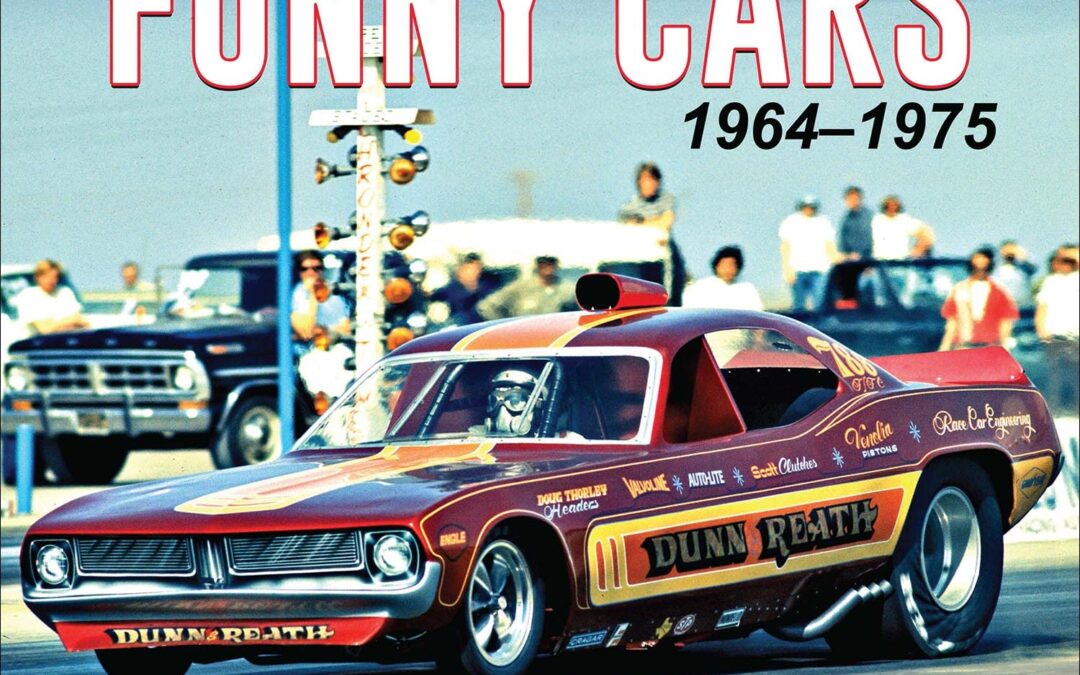
Blast through the evolving early years of Funny Car drag racing when doorslammers morphed into flip-top rail monsters. The era features historic mounts from Arnie “the Farmer” Beswick, Al “the Flying Dutchman” Vanderwoude, “Jungle” Jim Liberman, Don “the Snake” Prudhomme, and many more!
The metamorphosis from doorslammers to fiberglass flip-top dragsters wasn’t ever a cut and dry plan. As drag racers pushed the envelope for more speed, a series of innovations quickly evolved and refined the genre.
Funny Cars cut their teeth in the A/Factory Experimental (A/FX) and Experimental Stock (X/S) classes in 1964 with the 2-percent Mopars that looked funny with their axles moved forward. However, it was Jack Chrisman’s supercharged, nitro-fueled 427 Supercharged Factory Experimental (S/FX) Comet Caliente that trailblazed the class on which the NHRA turned its back and the AHRA fully accepted. Showmanship became the draw in the dawn of Funny Car with half-track burnouts and flame-throwing headers that packed fans five deep at the fence.
By 1969, the NHRA had no choice but to create a class for these nitro-breathing, flip-top-sporting rail bruisers, indoctrinating the Funny Car (F/C) class at the Winternationals with 40 cars vying for 16 places in the field. The rest, as they say, is history!
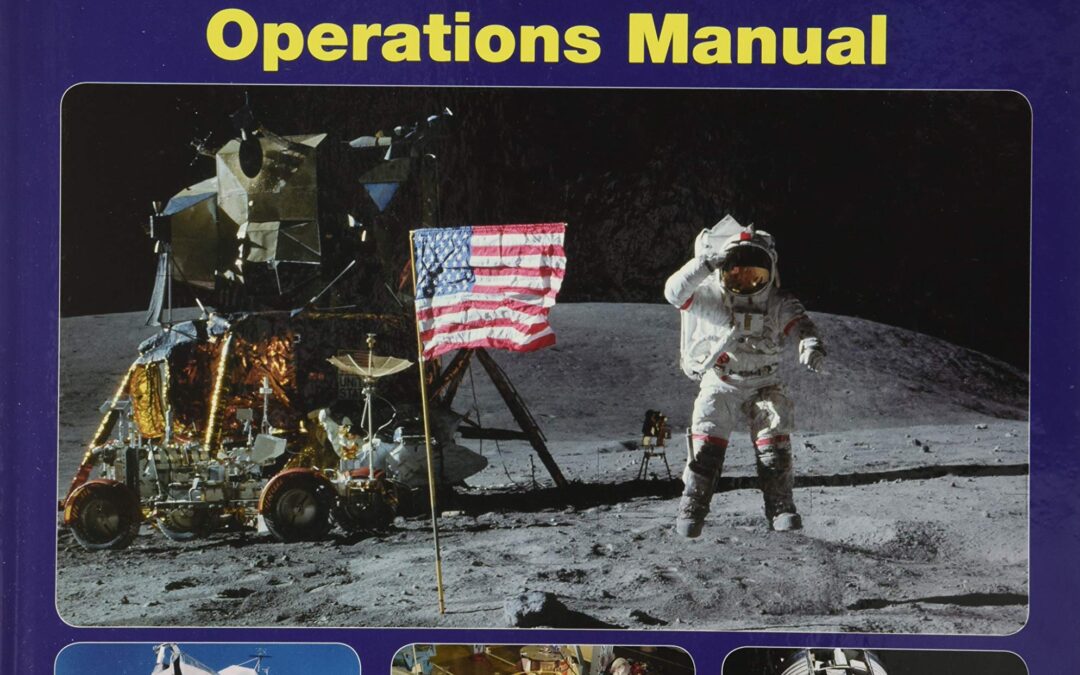
Published to coincide with the 50th anniversary of the first Moon landing by Apollo 11.
The story of Apollo has been told many times, but most accounts stop at the first landing. This book picks up where others have left off, and describes the five post-Apollo 11 Moon landings, defined as technical developments built upon engineering excellence. It was only through the robust design adopted when aerospace contractors first designed and built the Apollo spacecraft and the Lunar Module that successive evolutions were possible, taking lunar-landing operations far beyond what had first been envisaged.
This book is not intended to tell the full story of each mission, but rather to describe the technical development of spacecraft and equipment necessary to grow the capability from a single EVA
(‘moonwalk’) of less than three hours, to advanced missions where astronauts spent three full working days exploring their landing sites. With the aid of a Lunar Roving Vehicle, they collected a wide
variety of rocks and soil and left a range of instruments at the surface powered by a thermonuclear generator. As interest grows in humans returning to the Moon, 50 years on from those pioneering days of lunar exploration, we look again at what was accomplished at the dawn of the Space Age, spurred on by a political goal and developed as a tool for science.
The story of the Apollo Moon missions is an expression of those achievements.

The Olympic Airways story has fascinated Graham M. Simons for many years. This new book represents the culmination of decades spent researching the history of this fascinating Greek airline. It is a story of evolution, conflict, personality and politics, all set against a backdrop of world and civil wars, coups and counter-coups.During the course of his research, it became apparent to the author that many of the fine details pertaining to the company weren’t widely known, although almost everyone had heard of the towering, controversial, leading figurehead who oversaw much of the central part of the story: Aristotle Socrates Onassis. His colorful life is threaded through this history, lending it drama and multiple levels of intrigue.The airline’s story cannot be told in isolation. Olympic did not spring fully formed into being in 1957. The named company may have come into being then, but its roots were set much further back in history through a number of predecessor airlines – both national and international – who had been using the Hellenic Republic and Athina as the crossroads of the air for the Eastern Mediterranean since the dawn of aviation.This is the story of the birth and dramatic life of an airline with a chequered, controversial and complicated history. Graham M. Simons has skilfully woven all the various threads to create a powerful and important historic record.
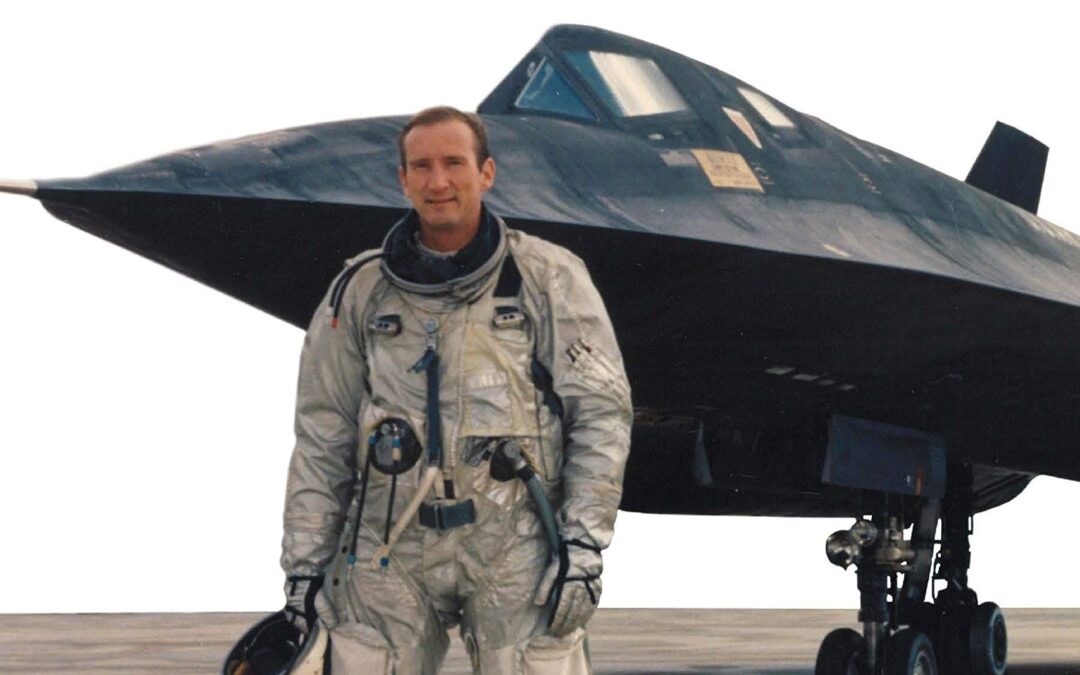
On December 22, 1964, at a small, closely guarded airstrip in the desert town of Palmdale, California, Lockheed test pilot Bob Gilliland stepped into a strange-looking aircraft and roared into aviation history.
Developed at the super-secret Skunk Works, the SR-71 Blackbird was a technological marvel. In fact, more than a half century later, the Mach 3–plus titanium wonder, designed by Clarence L. “Kelly” Johnson, remains the world’s fastest jet.
It took a test pilot with the right combination of intelligence, skill, and nerve to make the first flight of the SR-71, and the thirty-eight-year-old Gilliland had spent much of his life pushing the edge.
In Speed one of America’s greatest test pilots collaborates with acclaimed journalist Keith Dunnavant to tell his remarkable story: How he was pushed to excel by his demanding father. How a lucky envelope at the U.S. Naval Academy altered the trajectory of his life. How he talked his way into U.S. Air Force fighters at the dawn of the jet age, despite being told he was too tall. How he made the conscious decision to trade the security of the business world for the dangerous life of an experimental test pilot, including time at the clandestine base Area 51, working on the Central Intelligence Agency’s Oxcart program.
The narrative focuses most intently on Gilliland’s years as the chief test pilot of the SR-71, as he played a leading role in the development of the entire fleet of spy planes while surviving several emergencies that very nearly ended in disaster.
Waging the Cold War at 85,000 feet, the SR-71 became an unrivaled intelligence-gathering asset for the U.S. Air Force, invulnerable to enemy defenses for a quarter century.
Gilliland’s work with the SR-71 defined him, especially after the Cold War, when many of the secrets began to be revealed and the plane emerged from the shadows—not just as a tangible museum artifact but as an icon that burrowed deep into the national consciousness.
Like the Blackbird itself, Speed is a story animated by the power of ambition and risk-taking during the heady days of the American Century.

At the dawn of the First World War, Manfred von Richthofen sought glory. What he found was misery. Sentenced to a meaningless staff position after losing his first battle, Richthofen joins the fledgling German air force and discovers his deadly talent for air to air combat.
In the air, victory and renown come at the expense of other men’s lives and with a burden that grinds against his soul. To the soldiers and people of Germany, he was the pride of an empire. To his foes, he was the Red Baron. As wounds to his body and spirit mount, Richthofen learns that even heroes have limits. As the war enters the final stages, finding the strength to keep fighting will be his greatest battle.

Trace the evolution of the supercar through the technology that drives it.
In The Science of Supercars, the authors describe the history of supercars, unraveling the mysteries and mechanics of the cars that changed the automotive world forever. In-depth interviews with the top names in the supercar and racing industries reveal their opinions on today’s supercars and their visions for the future.
David Coulthard, runner-up in the 2001 Formula One World Drivers’ Championship, provides the introduction. The authors follow with comprehensive chapters of inside information and exciting photographs that will be a catalog for supercar shoppers and a dream diary for others. The images show the interiors and exteriors of supercars and illustrated insets explain the technology.
-
1. The Thirst for Power – The internal combustion engine and the early days of speed
2. Style Versus Substance – Next steps, and the birth of aerodynamics
3. Emerging Technologies – The mechanics of war drive the birth of the supercar
4. Configuration – The Miura, the E-Type and the dawn of the modern age
5. The Science of Theater – Fashion and styling take center stage
6. The Turbo Years – The Porsche Turbo and the rebirth of supercar science
7. All-Wheel drive – Power or technology: how designers keep the cars on the road
8. Composites – The McLaren F1 and its technological legacy
9. Emerging Aero – Understanding the complex art of aerodynamics
10. Going to the Opera – The remarkable science behind the era-defining Bugatti Veyron
11. The Holy Trinity – Hybrid tech ushers in a new kind of supercar
12. The Future – The technology on the verge of reshaping the landscape.The Science of Supercars includes interviews with three of the top figures in the supercar world: Adrian Newey, legendary British Formula One engineer; Dr. Wolfgang Schrieber, Chief Engineer of the Bugatti Veyron; and Gordon Murray, designer of the McLaren F1 supercar, as well as contributions from iconic supercar manufacturers that include Lamborghini, Porsche, Bugatti, Pagani and McLaren.

West Coast Wild
California s architectural anomalies
At the dawn of the automobile age, Americans predilection for wanderlust prompted a new wave of inventive entrepreneurs to cater to this new mode of transportation. Starting in the 1920s, attention-grabbing buildings began to appear that would draw in passing drivers for snacks, provisions, souvenirs, or a quick meal. The architectural establishment of the day dismissed these roadside buildings as monstrosities .
Yet, they flourished, especially along America s Sunbelt, and in particular, in Southern California, as proprietors indulged their creative impulses in the form of giant, eccentric constructions from owls, dolls, pigs, and ships, to coffee pots and fruit. Their symbolic intent was guileless, yet they were marginalized by history. But, over the past 40 years, California’s architectural anomalies have regained their integrity, and are now being celebrated in this freshly revised compendium of buildings, California Crazy.
Brimming with the best examples of this architectural genre, California Crazy includes essays exploring the influences that fostered the nascent architectural movement, as well as identifying the unconventional landscapes and attitudes found on Los Angeles and Hollywood roadsides which allowed these buildings to flourish in profusion.
In addition, California Crazy features David Gebhard’s definitive essay, which defined this vernacular movement almost forty years ago. The California Crazy concept is expanded to include domestic architecture, eccentric signage, and the automobile as a fanciful object.
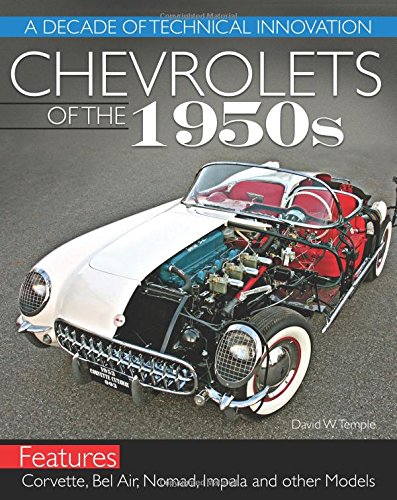
As the 1950s dawned, General Motors focused its industrial might on producing revolutionary rather than evolutionary cars with the ultimate goal to become the clear market leader in the automotive industry. To accomplish this goal, the company designed, developed, and consistently released innovative automotive technology. During the decade, Chevrolet introduced the small-block V-8, the Powerglide automatic transmission, air-conditioning, power steering, and many other innovations that made the cars faster, more comfortable, and safer.
All of the pieces had fallen into place. General Motors had astute leadership, a brilliant engineering team, forward-thinking stylists, a massive manufacturing infrastructure, and the capability to produce cutting-edge technology. With unbridled optimism and exuberance to meet the demands of the booming U.S. economy of the 1950s, the company designed, developed, and delivered an unprecedented number of breakthrough technologies, and established the blueprint for the modern automobile.
Automotive historian and veteran author David Temple goes behind the scenes to reveal how these technologies were designed, manufactured, and installed on Chevrolet’s fine portfolio of cars: the Corvette, 1955-1957 Bel Air, Nomad, Impala, and many more. Inside General Motors, many dedicated and talented leaders who were determined to make Chevrolet cars the best on the market. Vice President of Styling Harley Earl and his team designed the 1953 Corvette concept car for the Motorama show. After receiving numerous accolades, it was rushed into production. Design chief Harley Earl used his design acumen and creative vision as he led his team to style the 1955-1957 Bel-Air. Zora Arkus-Duntov worked tirelessly and transformed the Corvette from a touring car into a genuine sports car. Ed Cole and his engineers overcame many challenges to develop the compact, efficient, and powerful Chevy small-block V-8, which continued in production for decades.
Chevrolets of the 1950s retraces the design, development, and production of these cars, but it also covers innovative vital components that were installed in them. If you have been looking for the inside story on GM’s arguably greatest decade, the models, and the technology it produced, you have found it.
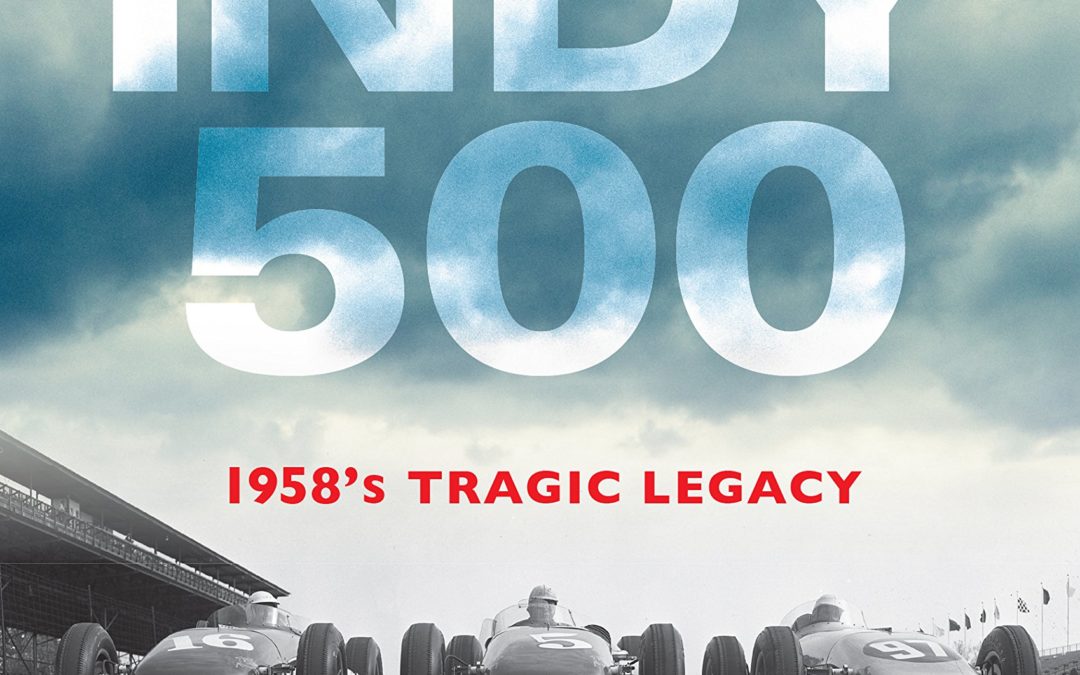
On May 30, 1958, thousands of racing fans poured into the infield at dawn to claim the best seats of the Indianapolis 500, unaware that they were going to witness one of the most notorious wrecks in racing history. Seconds after the green flag, a game of chicken spiraled out of control into a fiery 16-car pile-up that claimed the life of 29-year-old Indiana native and rising star Pat O’Connor. The other drivers escaped death, but the tragic 1958 Indy 500 seemed to leave its mark on them: the surviving drivers were hounded by accidents and terrible crashes, and most would die at tracks around the country. But the tragedy also prompted new regulations and safety precautions like roll bars that would ultimately save hundreds of lives. In The Curse of Indy 500: 1958’s Tragic Legacy, veteran sportswriter Stan Sutton profiles the ill-fated race and the careers of the drivers involved, highlighting their lives in the dangerous world of auto racing.
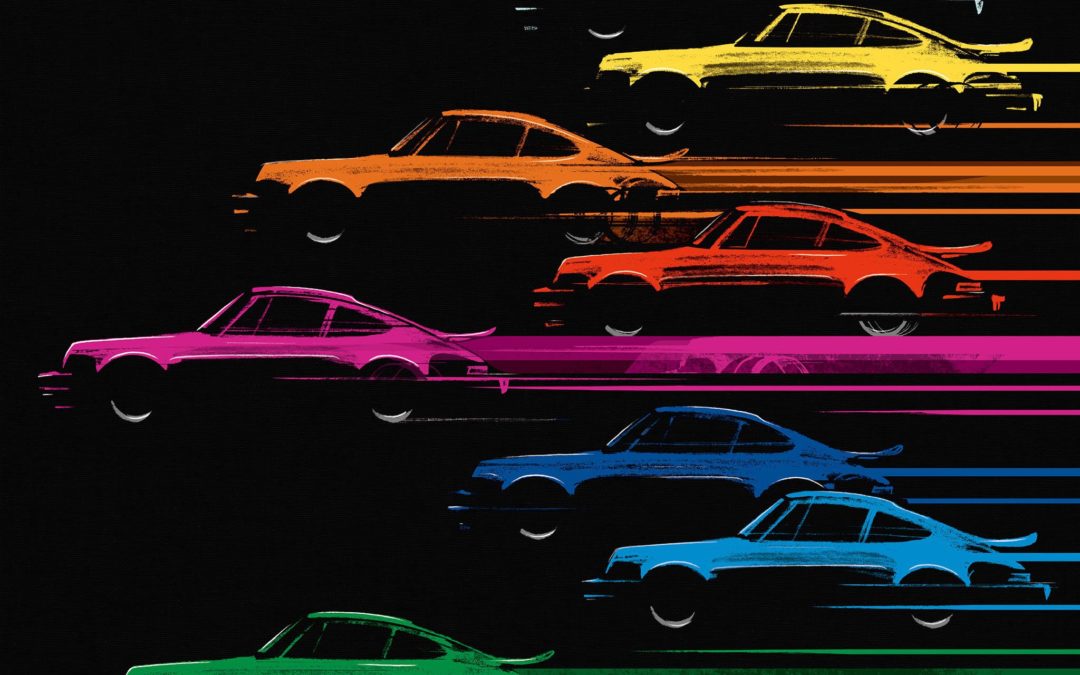
The mid-1970s were dark times for the automotive industry, and darker still for those passionate about high-performance cars. Manufacturers worldwide, struggling to comply with new emissions and safety regulations, were finding it difficult to produce cars capable of delivering a satisfying driving experience. With one or two exceptions-very expensive models built in minute quantities-none did. The cars produced in these years were at best compromised; most were simply dreadful. The OPEC oil embargo had just turned everything upside down while safety and emissions standards were strangling performance and stifling innovation from manufacturers. It was an atmosphere of complete and utter despair, as though all had been lost. Then-out of nowhere-Porsche dropped a bombshell, announcing a turbocharged series production supercar that not only met regulatory requirements but also delivered blistering performance. The 3.0-liter Turbo was an instant sensation, inspiring enthusiasts from every corner of the world and offered hope that perhaps there was still a future for performance cars.
The second Parabolica Press title, Turbo 3.0 continues the theme of being carefully researched using the Porsche archives, private collections, period documentation and intensive study. In an attempt to cover everything an owner, restorer or enthusiast would want to know about the dawn of Porsche’s turbocharged supercar, Turbo 3.0 includes a considerable amount of material never before published: comprehensive discussions of original options, close-up photos of key details, scenes from factory production, coverage of special one-off models and period motorsports. This is the definitive book about Porsche’s immortal 3.0-liter Turbo and it is essential reading for anyone who has ever owned, driven or simply lusted after the first supercar of the modern era.
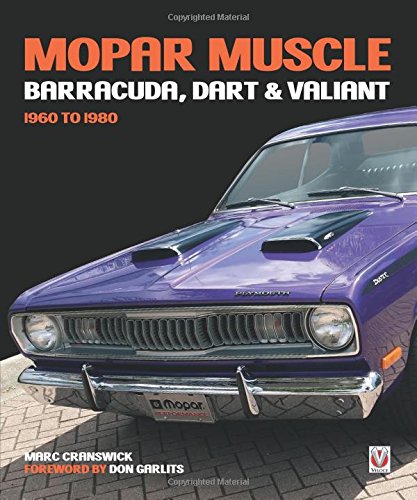
At the dawn of the 1960s, Chrysler Corp introduced a new kind of sophisticated family car called the Valiant. The Plymouth Valiant, and its cousin the Dodge Dart, travelled Detroit’s path from economy car to high-performance machine in style. Snazzier still, were the subsequent Plymouth Barracuda and Dodge Challenger relations that took on all comers in the pony and muscle car wars. By the mid ’70s a change of pace saw Dodge Aspen and Plymouth Volare meet the blend of economy, sports and luxury that buyers wanted. All through the years, and underpinning all models, was Chrysler Corp’s engineering excellence. Such excellence was apparent on racetracks and drag strips across the country, so too were the exploits of racing heroes that became Mopar legends. Through hard times and corporate change, Chrysler returned with the modern Hemi V8 motorvated 300s, Chargers and Challengers. The Demon still lives at Highland Park.

The German A4 rocket, or V2 – ‘Vergeltungswaffen Zwei’ (Vengeance Weapon 2), was the most sophisticated and advanced weapon developed in Europe during the Second World War. From September 1944 to March 1945, German army launch teams fired more than 3,000 V2 rockets at targets in England, France, Belgium and even within Germany itself. Many V2s were fired from mobile launch sites and from concealed wooded areas, using fleets of transporters and trailers with sophisticated ancillary and support vehicles. Traveling at the edge of space, the V2 rockets fell without warning at supersonic speeds, turning buildings and streets into cratered rubble, and terrorizing the civilians targeted by these attacks.
Drawing on a wide range of archive sources, rare personal accounts and interviews conducted with personnel associated with the A4/V2 program, rocketry expert Murray R. Barber traces the origins of the V2 and presents a detailed view of the research conducted at the secret, experimental rocket-testing facility at Kummersdorf West and the vast, infamous base at Peenemunde. This important new work reveals the transformation of the rocket into a weapon of war and describes the A4 in detail as well as the intense and often difficult intelligence effort by the Allies to discover more about this highly secret and unprecedented weapon, and to destroy it.
The author also describes the field-testing of the A4 rocket, its reliability problems and the remedies and compromises employed to deal with them. He reveals the activities of the SS and their machinations to gain control of the rocket program from the Wehrmacht, as well as the subsequent operational deployment of the V2 in Operation Penguin, the ‘vengeance’ offensive against the British Isles.
Illustrated throughout with rare and many previously unseen images (including color photographs), technical drawings and maps, this is the most comprehensive book ever on the V2, and includes important new details of the post-war development and testing of the rocket and its role in the dawning of the space age.



